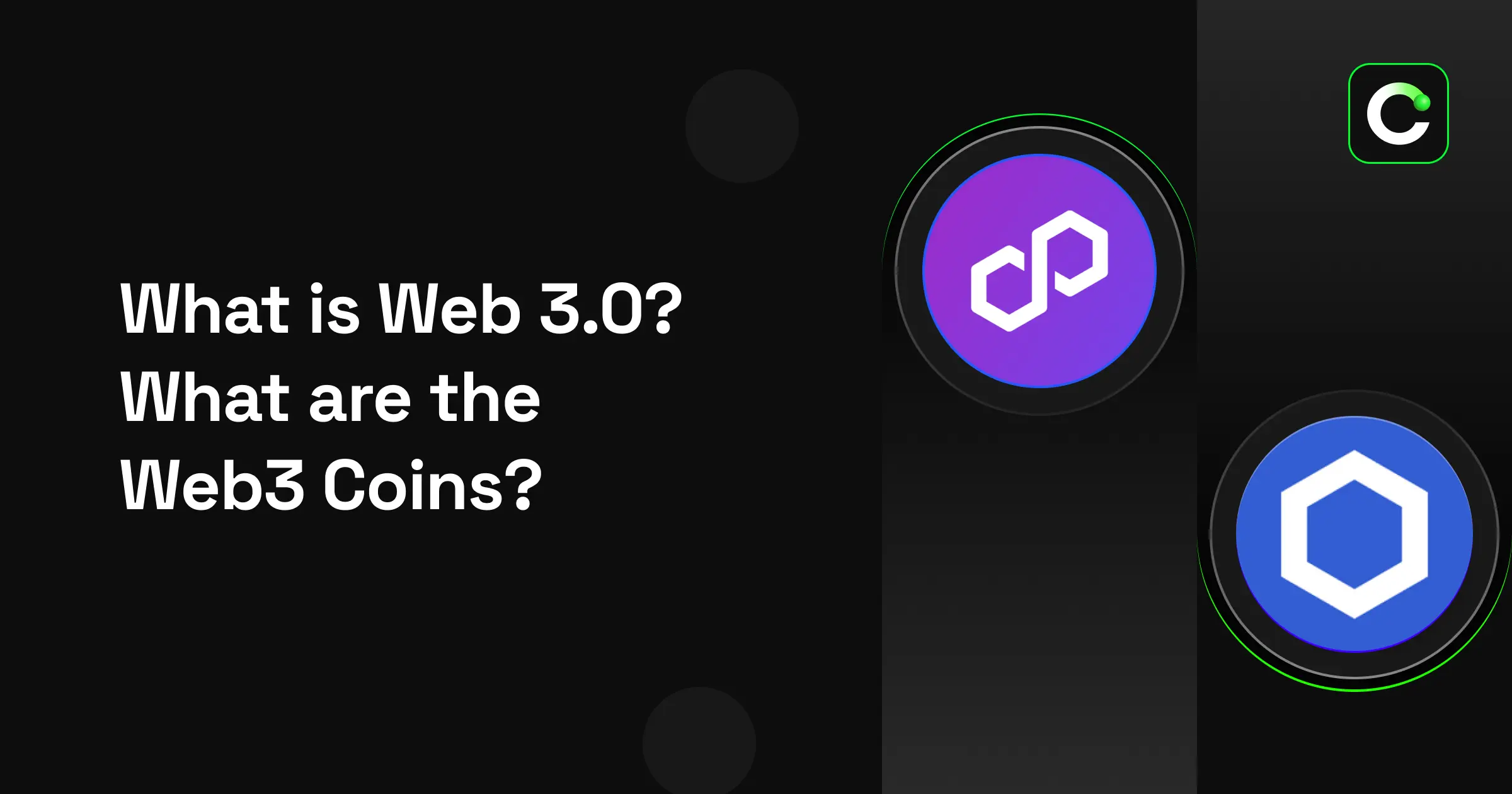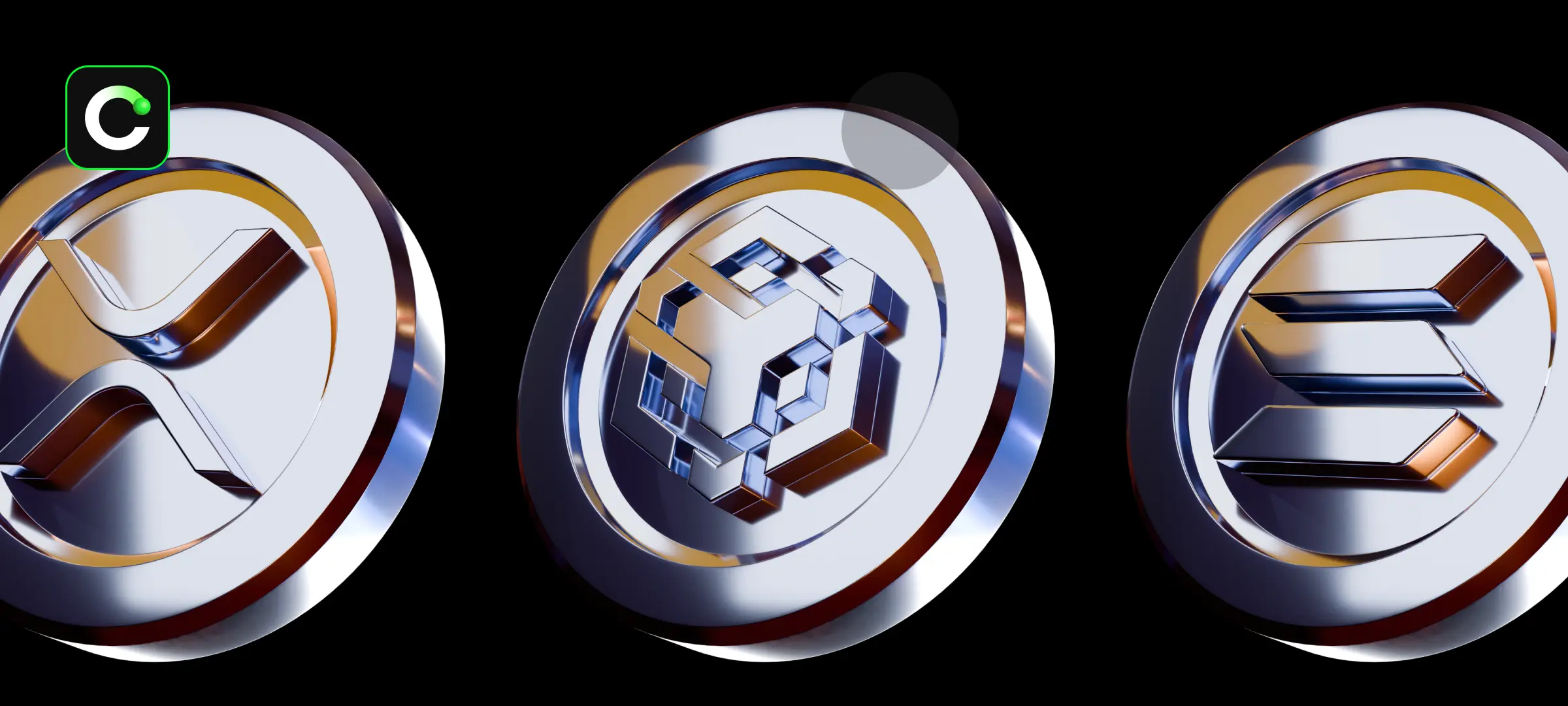What is Web3? What Are Web3 Coins? 

Cryptocurrency Exchange

Web3, also known as the third generation of the internet, represents a new vision built on decentralization, user control, and
blockchain technology. It offers a structure where users control their data, digital identities are secured, and crypto assets take center stage in the economic system. In this article, we will dive deep into what Web3 is, how it emerged, its core features, and the most popular Web3 coins and projects shaping this ecosystem.
How Did Web3 Emerge?
To fully understand how Web3 came into existence, it's essential to explore the earlier phases of the internet. The first version,
Web 1.0, consisted of static pages in the 1990s that were limited to passive information consumption. Users could read content but had no means of interacting or contributing.
Then came
Web 2.0, the era of social media platforms, user-generated content, and interactive web applications. However, during this period, data and content production became heavily centralized under the control of large corporations. User data was stored on the servers of big tech companies, sparking debates around data ownership and digital privacy.
At this point,
Web3 technologies emerged as the next evolution, an internet focused on decentralization, security, and user empowerment. Built on
blockchain,
smart contracts, and
cryptocurrencies, Web3 launched a new era where users could control their data and directly participate in digital economies.
How is Web 3.0 Different from Web 1.0 and Web 2.0?
Web 3.0, or simply
Web3, differs from previous internet versions in several ways:
-
Decentralization: Data and applications are managed by distributed networks rather than a single authority.
-
User control over data: Individuals can manage and share their personal data at their discretion.
-
Smart contracts and blockchain: Enable automated, transparent, and trustworthy transactions.
-
Direct economic participation: Users can create and earn value through digital assets such as tokens and NFTs.
-
Transparency and openness: Web3 promotes a more transparent and user-driven internet experience.
While Web1 was "read-only" and Web2 was "read and write,"
Web3 is "read, write, and own"—an internet where users are active participants and true owners of their digital presence.
Key Features of Web3
Web3 marks the beginning of a new internet era with several core features that make it appealing to both users and developers:
-
Decentralization : Data is stored across blockchain networks, not controlled by a single entity, offering resistance to censorship and stronger data protection.
-
User sovereignty: Individuals have full ownership of their identity and digital assets.
-
Smart contracts: Enable automatic, secure, and trustless transactions, reducing the need for intermediaries.
-
Token economy: Through crypto tokens, users can invest in projects, earn rewards, and engage in decentralized ecosystems.
-
Interoperability: Facilitates seamless communication and data sharing between different blockchains and applications.
These characteristics set the foundation for a radically transformed internet experience in the years to come.
Web3 Projects and Ecosystem
The Web3 ecosystem consists of a wide variety of projects serving different purposes, including
decentralized finance (DeFi),
decentralized applications (dApps),
NFT platforms, and more. Some standout Web3 projects include:
-
Polkadot (DOT): Enables interoperability and connectivity between blockchains.
-
Chainlink (LINK): Brings real-world data to smart contracts.
-
NEAR Protocol (NEAR): Offers a scalable and fast blockchain infrastructure.
-
Holo (HOT): Provides decentralized hosting and development environments for dApps.
-
Basic Attention Token (BAT): Aims to reshape digital advertising by rewarding users for their attention.
These projects reflect various dimensions of the Web3 vision and contribute to the ecosystem's growth.
Web3 Wallets
To securely store digital assets in the Web3 world, users rely on specialized
Web3 wallets. These wallets are designed not only to hold cryptocurrencies but also NFTs and other digital assets. Web3 wallets empower users with full control over their private keys, making them a fundamental component of the decentralized internet.
Web3 Coins

One of the cornerstones of the Web3 ecosystem is the
native cryptocurrencies of its projects. These coins are not only investment assets but also serve as tools for network participation, governance, and economic interaction. Web3 coins make it possible for users to fully engage with the decentralized opportunities of the modern internet.
Polkadot (DOT)
Polkadot enables communication between different blockchains and is a pioneer in Web3 interoperability. On
CoinTR, DOT is available for trading with
DOT/USDT and
DOT/TRY pairs, offering users the flexibility to trade in both USD Tether and Turkish Lira.
Chainlink (LINK)
Chainlink is a decentralized oracle network that connects smart contracts with real-world data. The
LINK token plays a crucial role in the network’s operation. On CoinTR, LINK can be traded in
LINK/USDT and
LINK/TRY pairs, making it accessible to various user preferences.
Basic Attention Token (BAT)
BAT powers a new model of digital advertising via the
Brave browser, rewarding users for their attention. BAT is listed on CoinTR with
BAT/USDT and
BAT/TRY trading pairs, offering flexibility for investors using different fiat or stable currencies.
NEAR Protocol (NEAR)
NEAR offers a scalable and user-friendly blockchain platform for developers and users. The NEAR token is listed on CoinTR with
NEAR/USDT and
NEAR/TRY pairs, allowing seamless trading in both global and local currencies.
Holo (HOT)
Holo provides hosting solutions for decentralized applications and rewards users who share their internet resources. HOT tokens can be traded on CoinTR via
HOT/USDT and
HOT/TRY pairs, supporting both crypto and fiat-based strategies.
For the latest updates and insights into the crypto world, visit the
CoinTR blog regularly!
Legal Notice
The information, comments, and evaluations contained in this content do not constitute investment advice. This content is not intended to be prescriptive in any way and is intended to provide general information. It does not constitute investment advice. CoinTR cannot be held responsible for any transactions made based on this information or any losses that may arise.
Recommended
- Cryptocurrency ExchangeWhat is a Stablecoin? 2025 Stablecoin List The cryptocurrency market is known for its high volatility, posing significant risks for investors. Stablecoins provide a secure alternative by maintaining a stable value. Typically pegged to fiat currencies, precious metals, or other assets, stablecoins serve as a safe haven for investors and traders. But what is a stablecoin, how does it work, and what types exist? Let’s dive into the details. What is a Stablecoin? A stablecoin is a type of cryptocurrency designed to maintain a stable value,
2024-11-24
- Cryptocurrency ExchangeWhat are Bear and Bull Markets? In financial markets, the terms bear market and bull market are often used to describe overall trends. A bear market represents periods of declining prices, while a bull market refers to rising trends. These terms are particularly important in the cryptocurrency market. But what exactly is a bear market, what is a bull market, and how long do these periods last? Here’s a detailed guide. What is a Bear Market? A bear market is a period when asset prices experience a prolonged decline, typically
2024-11-24
- Cryptocurrency ExchangeWhat is Blockchain Technology? Blockchain is a digital ledger technology where data is stored on a distributed network without the need for central authority. As the backbone of cryptocurrencies such as Bitcoin, blockchain is now being used not only in the financial world but also across many different industries. Blocks record transactions, and each block is linked to the previous one, forming a chain. This structure makes data immutable, tamper-proof, and transparent. Key Features: Decentralization: Not controlled by a s
2024-11-28


